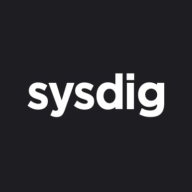


Sysdig Secure and Microsoft Defender for Cloud compete in cloud security. Microsoft Defender for Cloud has the upper hand due to its comprehensive features spanning threat intelligence and cloud integration, whereas Sysdig Secure is praised for its cost-effective pricing and excellent customer support.
Features: Sysdig Secure provides deep container visibility, robust runtime security, and powerful DevSecOps tools. Microsoft Defender for Cloud offers integrated threat intelligence, security score reporting, and seamless Azure ecosystem integration.
Room for Improvement: Sysdig Secure could enhance its multi-cloud capabilities, widen its security monitoring beyond containers, and improve its threat intelligence integration. Microsoft Defender for Cloud could benefit from a more user-friendly interface, quicker response times in support, and finer customization options for non-Azure environments.
Ease of Deployment and Customer Service: Sysdig Secure's simplified deployment and target-specific support cater well to container-focused needs, providing straightforward installation. Microsoft Defender for Cloud offers detailed deployment guidance within the Microsoft ecosystem, making it suitable for existing Azure users, although support response times could see improvement.
Pricing and ROI: Sysdig Secure delivers competitive pricing with favorable ROI for container-centric organizations, offering lower setup costs. Microsoft Defender for Cloud demands higher pricing due to extensive features and ROI from its advanced security across cloud environments, justifying investment from large enterprises.
| Product | Market Share (%) |
|---|---|
| SentinelOne Singularity Cloud Security | 4.6% |
| Microsoft Defender for Cloud | 10.9% |
| Sysdig Secure | 3.1% |
| Other | 81.4% |



| Company Size | Count |
|---|---|
| Small Business | 44 |
| Midsize Enterprise | 21 |
| Large Enterprise | 53 |
| Company Size | Count |
|---|---|
| Small Business | 26 |
| Midsize Enterprise | 7 |
| Large Enterprise | 45 |
| Company Size | Count |
|---|---|
| Small Business | 5 |
| Midsize Enterprise | 2 |
| Large Enterprise | 3 |
SentinelOne Singularity Cloud Security offers a streamlined approach to cloud security with intuitive operation and strong integration capabilities for heightened threat detection and remediation efficiency.
Singularity Cloud Security stands out for its real-time detection and response, effectively minimizing detection and remediation timelines. Its automated remediation integrates smoothly with third-party tools enhancing operational efficiency. The comprehensive console ensures visibility and support for forensic investigations. Seamless platform integration and robust support for innovation are notable advantages. Areas for development include improved search functionality, affordability, better firewall capabilities for remote users, stable agents, comprehensive reporting, and efficient third-party integrations. Clarity in the interface, responsive support, and real-time alerting need enhancement, with a call for more automation and customization. Better scalability and cost-effective integration without compromising capabilities are desired.
What are SentinelOne Singularity Cloud Security's standout features?SentinelOne Singularity Cloud Security is deployed in industries needing robust cloud security posture management, endpoint protection, and threat hunting. Utilized frequently across AWS and Azure, it assists in monitoring, threat detection, and maintaining compliance in diverse environments while providing real-time alerts and recommendations for proactive threat management.
Microsoft Defender for Cloud is a comprehensive security solution that provides advanced threat protection for cloud workloads. It offers real-time visibility into the security posture of cloud environments, enabling organizations to quickly identify and respond to potential threats. With its advanced machine learning capabilities, Microsoft Defender for Cloud can detect and block sophisticated attacks, including zero-day exploits and fileless malware.
The solution also provides automated remediation capabilities, allowing security teams to quickly and easily respond to security incidents. With Microsoft Defender for Cloud, organizations can ensure the security and compliance of their cloud workloads, while reducing the burden on their security teams.
In the cloud, every second counts. Attacks move at warp speed, and security teams must protect the business without slowing it down. Sysdig stops cloud attacks in real time, instantly detecting changes in risk with runtime insights, a unique AI architecture, and open source Falco. Sysdig delivers live visibility by correlating signals across cloud workloads, identities, and services to uncover hidden attack paths. By knowing what is running, teams can prioritize the vulnerabilities, misconfigurations, permissions, and threats that matter most. From prevention to defense, Sysdig helps enterprises move faster and focus on what matters: innovation.
Sysdig. Secure Every Second.
We monitor all Cloud-Native Application Protection Platforms (CNAPP) reviews to prevent fraudulent reviews and keep review quality high. We do not post reviews by company employees or direct competitors. We validate each review for authenticity via cross-reference with LinkedIn, and personal follow-up with the reviewer when necessary.